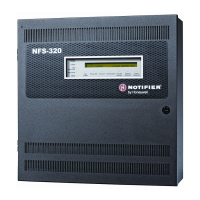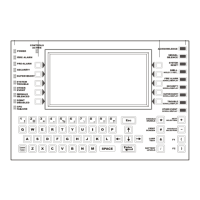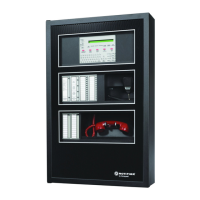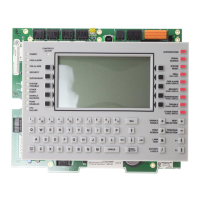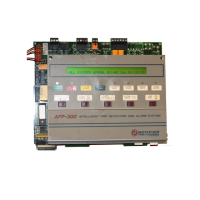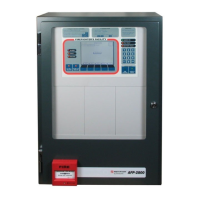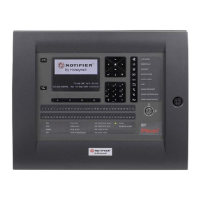Releasing Zones Releasing Applications
NFS-3030 Programming Manual P/N 51345:C 11/4/03 79
Appendix B: Releasing Applications
WARNING:Do not rely on Disable to disable releasing points during testing. Releasing points
must be physically disconnected
B.1 Releasing Zones
The control panel includes ten releasing zones (ZR00-ZR09) that can be used to control up to ten
releasing operations. Each zone operates independently, and is fully programmable. To program a
releasing zone, refer to "Releasing Zone" on page 46.
There are four releasing functions, outlined below, that can be defined by entering values in the
associated fields during programming.
B.2 NFPA Releasing Applications
This control panel can be used for agent release or preaction/deluge control applications. In a
properly configured system with compatible, listed actuating and initiating devices, this control
panel complies with the following NFPA standards for installation in accordance with the
!
Function/Field Explanation
Delay Time Delay Time is the time that elapses between activation of an initiating device and
activation of all outputs mapped to the initiating device through a releasing zone.
Delay Time can have a value of 0 to 60 (seconds). A value of 0 will result in immediate
output activation upon activation of the initiating device.
Following is a graphic representation of what happens when a delay timer is set to 15
seconds for releasing zone ZR02.
Note: If cross-zoning is in effect, the delay time will not begin until the cross-zoning
conditions are met. Refer to "Cross Zones" on page 87 for more information.
Abort Switch Selection of a 3-letter abort switch type code (ULI, IRI, NYC, or AHJ) defines the
operation of an Abort Switch in that releasing zone. Refer to the specific abort switch type
code heading in this appendix for details on how each functions.
Cross Zone Select one of three Cross Zone types (Yes, Zone, or Heat), or No (not used). A Cross Zone
requires tripping two or more initiating devices to activate the outputs mapped to a releasing
zone. Refer to the "Cross Zones" section of this appendix for details and examples.
Soak Time
(NFPA 16
Applications
only)
Soak Time specifies the length of time to dump releasing agents when a releasing zone
activates. When the Soak Time expires, the control panel automatically shuts the
releasing solenoids for the active releasing zone. Soak Time can have a value of 0 to
9999 seconds. If Soak Time is set to 0, the releasing solenoids will remain active until
system reset.
Following is a graphic representation of what happens when soak time is set to 300
seconds for releasing zone ZR02.
Initiating device
with releasing zone
ZR02 in its zone
map activates
All outputs with
ZR02 in their zone
maps activate at
15 seconds
Delay Time = 15 (seconds)
0 sec.
15 sec.
Initiating device with
releasing zone
ZR02 in its zone
map activates. All
outputs with ZR02 in
their zone maps
activate.
At 300 seconds,
the control panel
shuts releasing
solenoids for
outputs with
ZR02 in their
zone maps
Soak Time = 300 (seconds)
0 sec.
300 sec.
www.PDF-Zoo.com
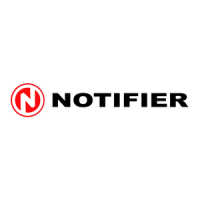
